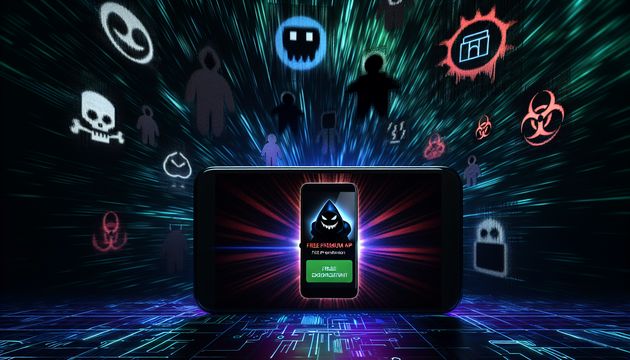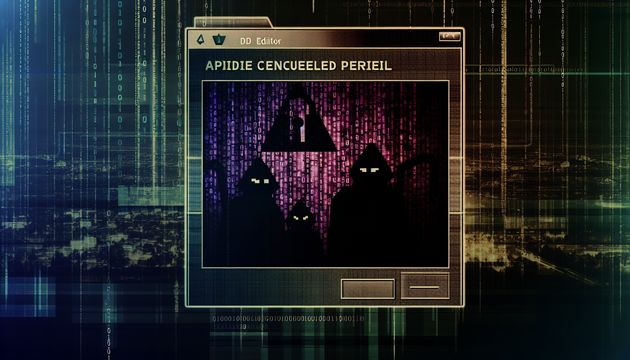
Gamaredon's Evolving Cyber Threats: A Closer Look
The Russian hacking group known as Gamaredon, or “Shuckworm,” has been making headlines with its sophisticated cyberattacks targeting Western military missions. This group has evolved its tactics, techniques, and procedures (TTPs) to enhance stealth and effectiveness, transitioning from Visual Basic Script (VBS) to PowerShell-based tools. PowerShell is a task automation framework from Microsoft, often used by attackers to execute commands and scripts on Windows systems. This shift, as reported by Symantec, highlights their strategic move to obfuscate, or hide, payloads and leverage legitimate services for evasion. Gamaredon’s recent campaigns have notably involved the use of malicious removable drives, targeting Western military missions in Ukraine with .LNK files that initiate infections upon execution. These developments underscore the group’s persistent threat to geopolitical entities, particularly those related to the Ukrainian military.
Gamaredon’s Evolving Cyber Tactics
Shift in Tactics and Techniques
The Russian state-backed hacking group known as Gamaredon, or “Shuckworm,” has been observed making significant changes to its tactics, techniques, and procedures (TTPs) to enhance its operational stealth and effectiveness. According to Symantec, these changes include a transition from using Visual Basic Script (VBS) to PowerShell-based tools. This shift indicates an evolution in their approach to cyberattacks, aiming to increase the obfuscation of payloads and leverage legitimate services for evasion.
The group has also been noted for modifying Windows Registry keys to hide specific files, a tactic that further complicates detection and analysis by cybersecurity professionals. By storing payloads in the Windows Registry and splitting them by functions, Gamaredon minimizes the chances of being detected by traditional antivirus tools. This method allows the malware to remain hidden while executing its espionage activities, such as stealing documents from various locations on the infected system.
Use of Malicious Drives
One of the key vectors used by Gamaredon in its recent campaigns is the deployment of malicious removable drives. As reported by Bleeping Computer, the group has been targeting Western military missions in Ukraine by using removable drives containing malicious .LNK files. These files serve as shortcuts that, when executed, initiate the infection process on the target system.
The infection typically begins with the execution of a heavily obfuscated script that creates and runs two files. The first file manages command and control (C2) communications, utilizing legitimate services to resolve server addresses and connect to Cloudflare-protected URLs. The second file is responsible for spreading the infection to other removable and network drives, using LNK files to propagate the malware while hiding certain folders and system files to maintain stealth.
Advanced Evasion Techniques
Gamaredon has demonstrated a sophisticated understanding of evasion techniques, employing methods that make detection and mitigation challenging for cybersecurity teams. One such technique involves the use of PowerShell scripts for reconnaissance, which can capture and exfiltrate screenshots of the infected device, gather information about installed antivirus tools, and monitor running processes.
The final payload used in these attacks is a PowerShell-based version of the GammaSteel malware, which is designed to steal sensitive documents and exfiltrate them using PowerShell web requests. If the exfiltration process fails, the group resorts to using cURL over Tor to transfer the stolen data, adding an additional layer of anonymity and security to their operations.
Persistence and Escalation
Gamaredon’s persistence in targeting specific geopolitical entities, particularly those related to the Ukrainian military, underscores the group’s long-term strategic objectives. As detailed by Cyble, the group has been active since at least 2013, with a history of targeting Ukrainian government institutions and critical infrastructure.
In recent months, Gamaredon has escalated its efforts by launching large-scale spear-phishing campaigns aimed at Ukrainian military personnel. These campaigns involve the use of malicious XHTML attachments and obfuscated JavaScript to deliver harmful payloads. The attackers exploit Try Cloudflare’s one-time tunnel feature to host malicious archives, further complicating efforts to trace and block their activities.
Recommendations for Mitigation
To counter the evolving threat posed by Gamaredon, cybersecurity experts recommend a multi-layered approach to defense. Organizations should train users to recognize spear-phishing attempts, particularly those with suspicious attachments or unexpected military-themed content. Implementing advanced email security solutions that filter phishing emails and malicious attachments is crucial in preventing initial access to systems.
Additionally, regular updates to antivirus and endpoint protection tools can help detect and mitigate the impact of Gamaredon’s malware. Network administrators should also monitor for unusual activity, such as unauthorized access to sensitive files or unexpected network traffic patterns, which may indicate a compromise.
By staying vigilant and adopting proactive cybersecurity measures, organizations can better defend against the persistent and evolving threats posed by groups like Gamaredon.
Final Thoughts
Gamaredon’s persistent and evolving cyber threats highlight the critical need for robust cybersecurity measures. Their use of advanced evasion techniques, such as PowerShell scripts for reconnaissance and the deployment of malicious drives, poses significant challenges for cybersecurity teams. As detailed by Cyble, the group’s long-term strategic objectives focus on geopolitical targets, emphasizing the importance of vigilance and proactive defense strategies. By adopting a multi-layered approach to cybersecurity, organizations can better protect themselves against such sophisticated threats.
References
- Symantec. (2024). Russian hackers attack Western military mission using malicious drive. https://www.bleepingcomputer.com/news/security/russian-hackers-attack-western-military-mission-using-malicious-drive/
- Cyble. (2024). Gamaredon’s spear-phishing assault on Ukraine’s military. https://cyble.com/blog/gamaredons-spear-phishing-assault-on-ukraines-military/



